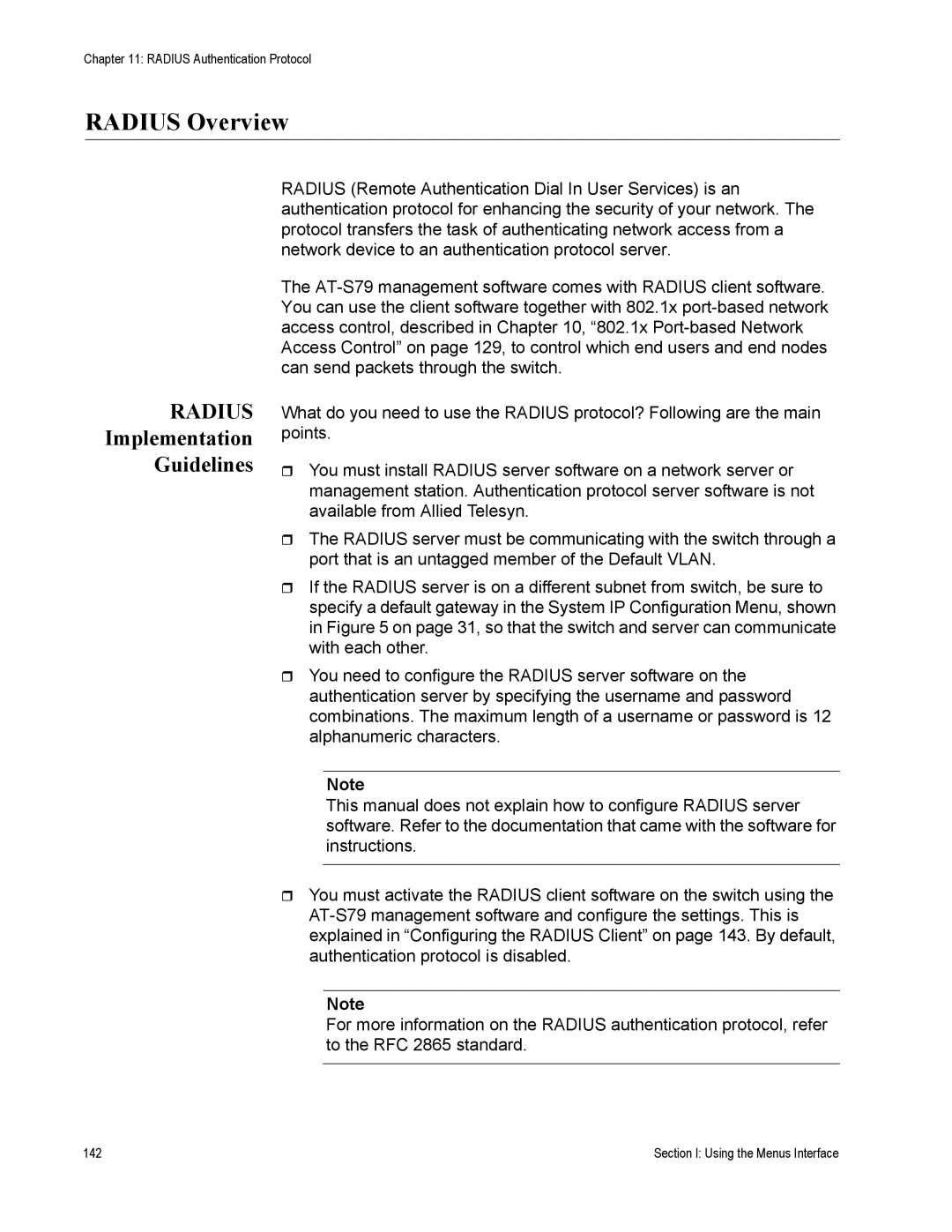
Chapter 11: RADIUS Authentication Protocol
RADIUS Overview
RADIUS
Implementation
Guidelines
RADIUS (Remote Authentication Dial In User Services) is an authentication protocol for enhancing the security of your network. The protocol transfers the task of authenticating network access from a network device to an authentication protocol server.
The
What do you need to use the RADIUS protocol? Following are the main points.
You must install RADIUS server software on a network server or management station. Authentication protocol server software is not available from Allied Telesyn.
The RADIUS server must be communicating with the switch through a port that is an untagged member of the Default VLAN.
If the RADIUS server is on a different subnet from switch, be sure to specify a default gateway in the System IP Configuration Menu, shown in Figure 5 on page 31, so that the switch and server can communicate with each other.
You need to configure the RADIUS server software on the authentication server by specifying the username and password combinations. The maximum length of a username or password is 12 alphanumeric characters.
Note
This manual does not explain how to configure RADIUS server software. Refer to the documentation that came with the software for instructions.
You must activate the RADIUS client software on the switch using the
Note
For more information on the RADIUS authentication protocol, refer to the RFC 2865 standard.
142 | Section I: Using the Menus Interface |
